An Experimental Study on the Influence of Soundscapes on People’s Behaviour in an Open Public Space
Abstract
:1. Introduction
2. Materials and Methods
2.1. Study Area
2.2. Equipment and Procedure
2.3. Signal Analysis
3. Results
3.1. Effect of Music on Ratio of People Stopping By
3.2. Effect of Music on Duration of Stay
3.2.1. Analysis of Covariant Attributes on Duration of Stay
3.2.2. Combined Effect of Posture and Music on Duration of Stay
4. Discussion and Conclusions
- the presence of music did not affect the number of subjects stopping by the observed area; thus, the manipulation of the sound environment had no power to influence people’s choice about stopping or not in the space;
- the presence of background music influenced people’s mean duration of stay in the public space, with added sound (Classical and Ambient music in the investigated case) implying a longer duration of stay than the one recorded in the control (no music) condition.
Acknowledgments
Author Contributions
Conflicts of Interest
References
- Schafer, R.M. The Tuning of the World; Knopf: New York, NY, USA, 1977. [Google Scholar]
- International Organization for Standardization. ISO 12913–1:2014 Acoustics—Soundscape—Part 1: Definition and Conceptual Framework; ISO: Geneva, Switzerland, 2014. [Google Scholar]
- Areni, C.S.; Kim, D. The influence of background music on shopping behavior: Classical versus top-forty music in a wine store. Adv. Consum. Res. 1993, 20, 336–340. [Google Scholar]
- Yalch, R.F.; Spangenberg, E.R. The effects of music in a retail setting on real and perceived shopping times. J. Bus. Res. 2000, 49, 139–147. [Google Scholar] [CrossRef]
- Milliman, R.E. Using background music to affect the behavior of supermarket shoppers. J. Mark. 1982, 46, 86–91. [Google Scholar] [CrossRef]
- Sayin, E.; Krishna, A.; Ardelet, C.; Decré, G.B.; Goudey, A. “Sound and safe”: The effect of ambient sound on the perceived safety of public spaces. Int. J. Res. Mark. 2015, 32, 343–353. [Google Scholar] [CrossRef] [Green Version]
- Kampfe, J.; Sedlmeier, P.; Renkewitz, F. The impact of background music on adult listeners: A meta-analysis. Psychol. Music 2011, 39, 424–448. [Google Scholar] [CrossRef]
- Ryuma Kuribayashi, R.; Nittono, H. Speeding up the tempo of background sounds accelerates the pace of behavior. Psychol. Music 2015, 43, 808–817. [Google Scholar] [CrossRef]
- Easteal, M.; Bannister, S.; Kang, J.; Aletta, F.; Lavia, L.; Witchel, H.J. Urban sound planning in Brighton and Hove. In Proceedings of the Forum Acusticum, Krakow, Poland, 7–12 September 2014.
- Witchel, H.J.; Lavia, L.; Westling, C.E.I.; Healy, A.; Needham, R.; Chockalingam, N. Using body language indicators for assessing the effects of soundscape quality on Individuals. In Proceedings of the AIA-DAGA Conference on Acoustics, Merano, Italy, 18–21 March 2013.
- Schafer, T.; Huron, D.; Shanahan, D.; Sedlmeier, P. The sounds of safety: Stress and danger in music perception. Front. Psychol. 2015, 6, 1–12. [Google Scholar] [CrossRef] [PubMed]
- Brown, A.L.; Kang, J.; Gjestland, T. Towards standardization in soundscape preference assessment. Appl. Acoust. 2011, 72, 387–392. [Google Scholar] [CrossRef]
- Department for Communities and Local Government. Planning Policy Statement 3 (PPS3): Housing; Department for Communities and Local Government: London, UK, 2006.
- Dempsey, N. Are good-quality environments socially cohesive? Measuring quality and cohesion in urban neighbourhoods. Town Plan. Rev. 2009, 80, 315–345. [Google Scholar] [CrossRef]
- University of Sheffield. Available online: https://www.sheffield.ac.uk/campusmasterplan (accessed on 24 July 2016).
- Aletta, F.; Kang, J.; Axelsson, O. Soundscape descriptors and a conceptual framework for developing predictive soundscape models. Landsc. Urban Plan. 2016, 149, 65–74. [Google Scholar] [CrossRef]
- Lòpez-Méndez, A.; Westling, C.E.I.; Emonet, R.; Eastel, M.; Lavia, L.; Witchel, H.J.; Odobez, J.-M. Automated bobbing and phase analysis to measure walking entrainment to music. In Proceedings of the International Conference on Image Processing, Paris, France, 23–30 October 2014.
- Yang, W.; Kang, J. Acoustic comfort evaluation in urban open public spaces. Appl. Acoust. 2005, 66, 211–229. [Google Scholar] [CrossRef]
- Stockfelt, T. Sound as an existential necessity. J. Sound Vib. 1991, 151, 367–370. [Google Scholar] [CrossRef]
- Davies, W.J.; Adams, M.D.; Bruce, N.S.; Cain, R.; Carlyle, A.; Cusack, P.; Hall, D.A.; Hume, K.I.; Irwin, A.; Jennings, P.; et al. Perception of soundscapes: An interdisciplinary approach. Appl. Acoust. 2013, 74, 224–231. [Google Scholar] [CrossRef]
- Yang, M.; Kang, J. Pitch features of environmental sounds. J. Sound Vib. 2016, 374, 312–328. [Google Scholar] [CrossRef]
- Raimbault, M.; Lavandier, C.; Èrengier, M.B. Ambient sound assessment of urban environments: Field studies in two French cities. Appl. Acoust. 2003, 64, 1241–1256. [Google Scholar] [CrossRef]
- Axelsson, Ö.; Nilsson, M.E.; Berglund, B. A principal components model of soundscape perception. J. Acoust. Soc. Am. 2010, 128, 2836–2846. [Google Scholar] [CrossRef] [PubMed]
- Moore, B.C.J. An Introduction to the Psychology of Hearing; Academic Press: London, UK, 1997. [Google Scholar]
- American Standards Association. American Standard Acoustical Terminology (Including Mechanical Shock and Vibration; Acoustical Society of America: New York, NY, USA, 1960. [Google Scholar]
- Hevner, K. The affective value of pitch and tempo in music. Am. J. Psychol. 1937, 49, 621–630. [Google Scholar] [CrossRef]
- Balkwill, L.L.; Thompson, W.F. Across-cultural investigation of the perception of emotion in music: Psychophysical and cultural cues. Music Percept. 1999, 17, 43–64. [Google Scholar] [CrossRef]
- Krumhansl, C.L. An exploratory study of musical emotions and psychophysiology. Can. J. Exp. Psychol. 1997, 51, 336–352. [Google Scholar] [CrossRef] [PubMed]
- Ellis, A.J.; Mendel, A. Studies in the History of Music Pitch; Frits Knuf: New York, NY, USA, 1968. [Google Scholar]
- Behavioral Observation Research Interactive Software (BORIS) version 2.95 User Guide. Available online: http://www.boris.unito.it (accessed on 24 July 2016).
- Martin, P.; Bateson, P. Measuring Behaviour: An Introductory Guide; Cambridge University Press: New York, NY, USA, 2007. [Google Scholar]
- Stanton, L.A.; Sullivan, M.S.; Fazio, J.M. A standardized ethogram for the felidae: A tool for behavioural researchers. Appl. Anim. Behav. Sci. 2015, 173, 3–16. [Google Scholar] [CrossRef]
- Jaccard, J. Interaction Effects in Factorial Analysis of Variance; Sage Publications: Thousand Oaks, CA, USA, 1998. [Google Scholar]
- Payne, S.R. The production of a perceived restorativeness soundscape scale. Appl. Acoust. 2013, 74, 255–263. [Google Scholar] [CrossRef]
- Guastavino, C.; Katz, B.F.; Polack, J.; Levitin, D.J.; Dubois, D. Ecological validity of soundscape reproduction. Acta Acust. United Acust. 2005, 91, 333–341. [Google Scholar]
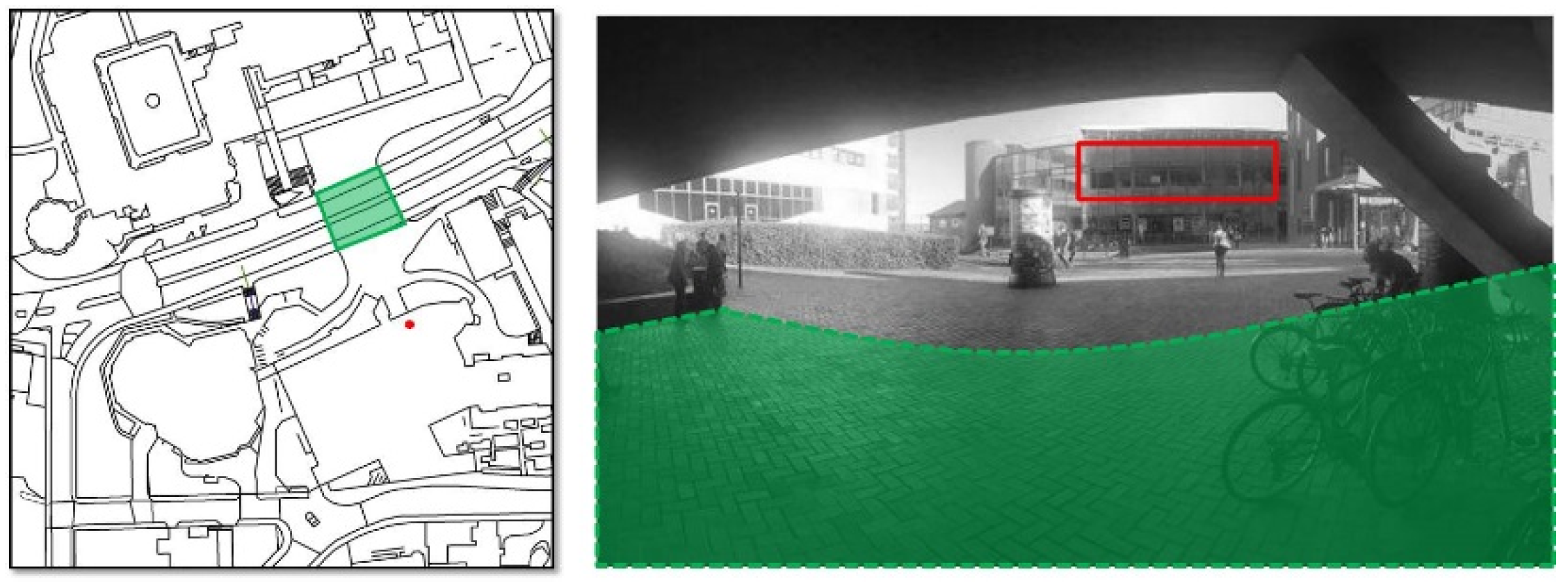
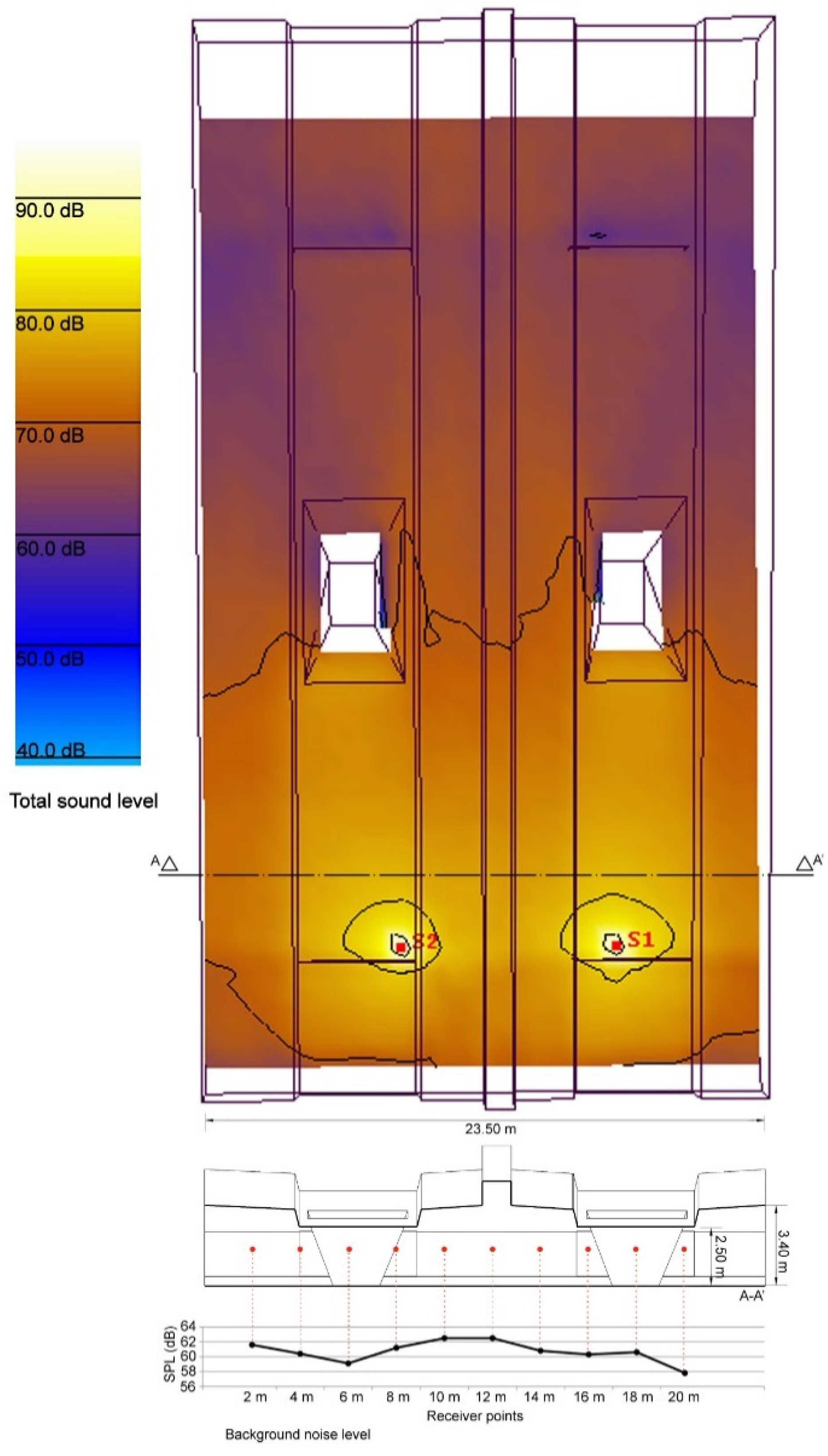
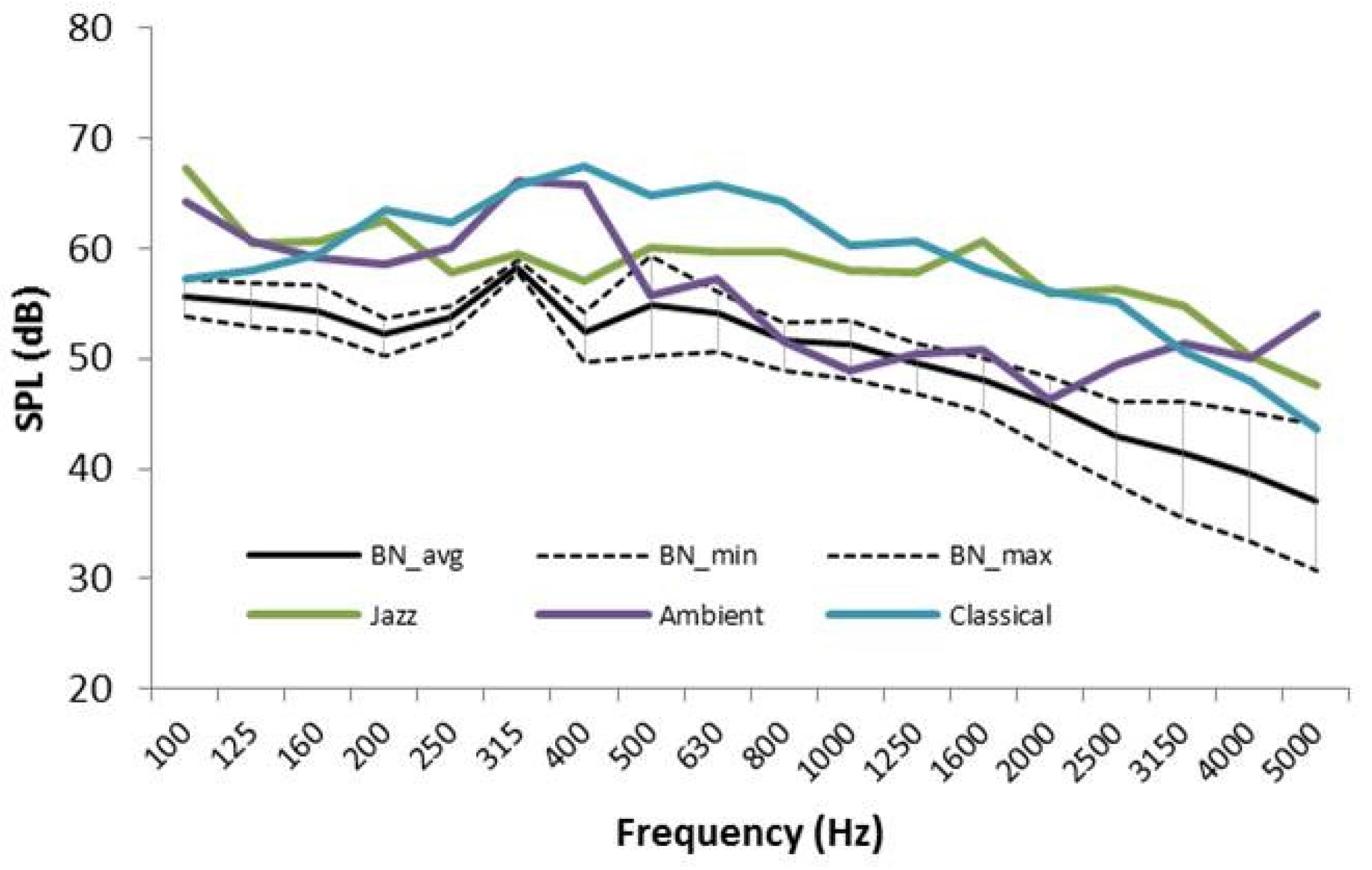
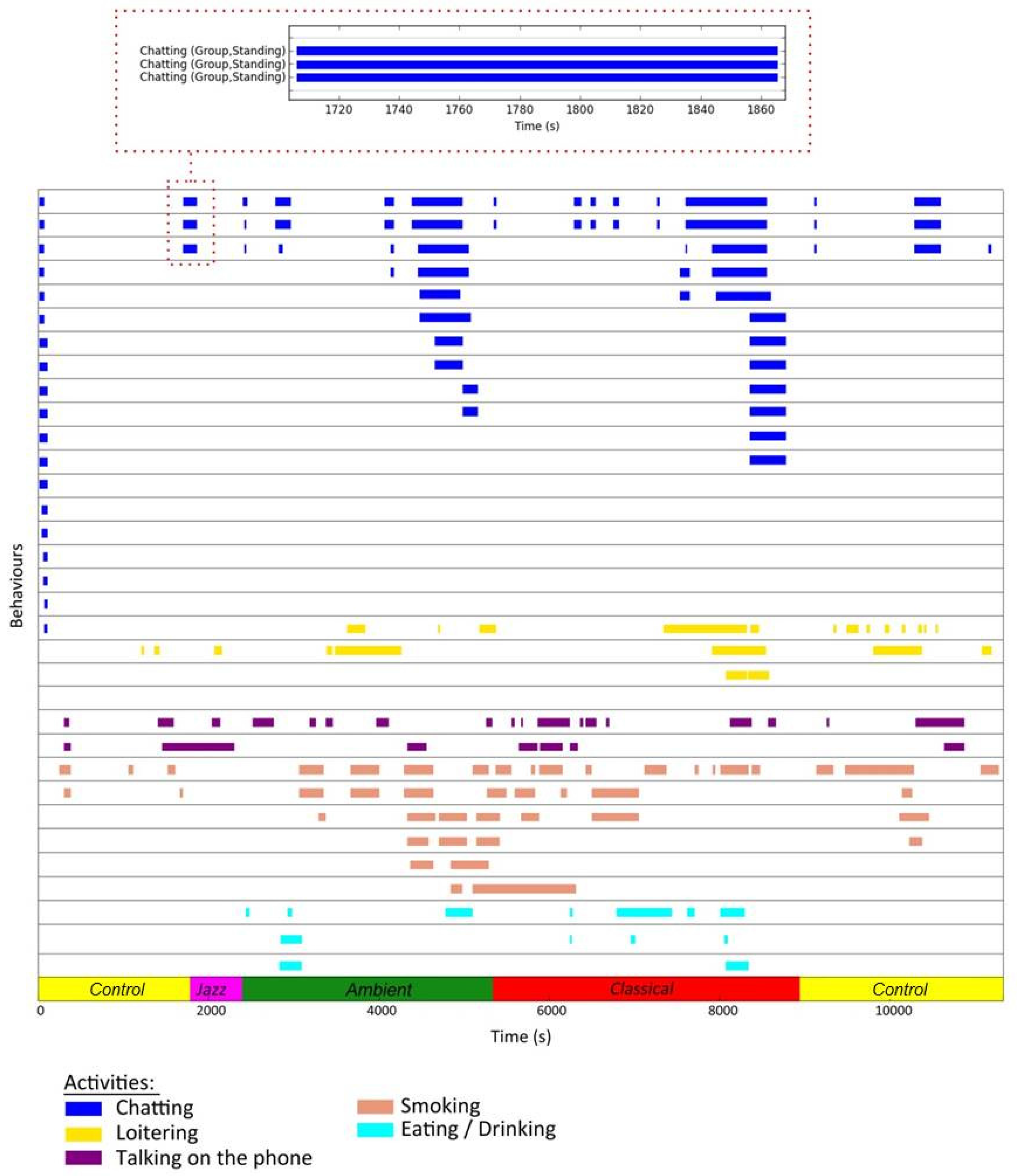

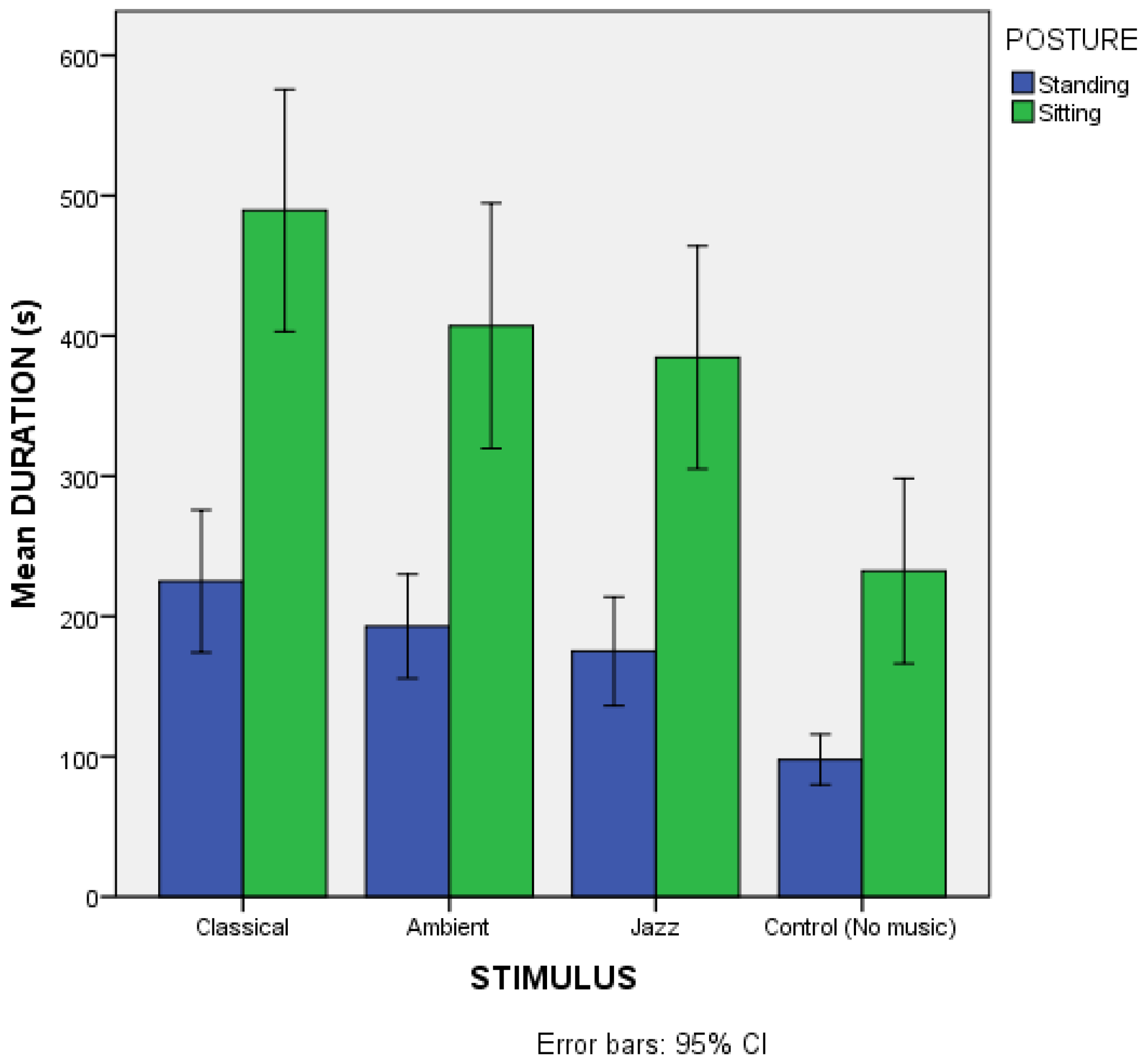
| Stimulus | Number of Passers-by | Number of Stoppers-by | Mean RSP | Std. Dev. RSP |
|---|---|---|---|---|
| Classical | 4107 | 181 | 4.4% | 2.5% |
| Ambient | 2921 | 161 | 5.5% | 3.8% |
| Jazz | 2989 | 135 | 4.5% | 2.9% |
| Control (No Music) | 2765 | 119 | 4.3% | 3.5% |
| Stimulus | Mean Duration of Stay (s) | Bootstrap (10,000 Bootstrap Samples) | |||
|---|---|---|---|---|---|
| Bias | Std. Error | 95% Confidence Interval | |||
| Lower | Upper | ||||
| Classical | 320.57 | 0.30 | 24.01 | 274.94 | 368.74 |
| Ambient | 274.69 | −0.18 | 21.74 | 233.42 | 318.60 |
| Jazz | 257.56 | −0.02 | 21.27 | 217.20 | 299.75 |
| Control (No Music) | 132.18 | 0.09 | 11.93 | 109.89 | 156.58 |
© 2016 by the authors; licensee MDPI, Basel, Switzerland. This article is an open access article distributed under the terms and conditions of the Creative Commons Attribution (CC-BY) license (http://creativecommons.org/licenses/by/4.0/).
Share and Cite
Aletta, F.; Lepore, F.; Kostara-Konstantinou, E.; Kang, J.; Astolfi, A. An Experimental Study on the Influence of Soundscapes on People’s Behaviour in an Open Public Space. Appl. Sci. 2016, 6, 276. https://doi.org/10.3390/app6100276
Aletta F, Lepore F, Kostara-Konstantinou E, Kang J, Astolfi A. An Experimental Study on the Influence of Soundscapes on People’s Behaviour in an Open Public Space. Applied Sciences. 2016; 6(10):276. https://doi.org/10.3390/app6100276
Chicago/Turabian StyleAletta, Francesco, Federica Lepore, Eirini Kostara-Konstantinou, Jian Kang, and Arianna Astolfi. 2016. "An Experimental Study on the Influence of Soundscapes on People’s Behaviour in an Open Public Space" Applied Sciences 6, no. 10: 276. https://doi.org/10.3390/app6100276








